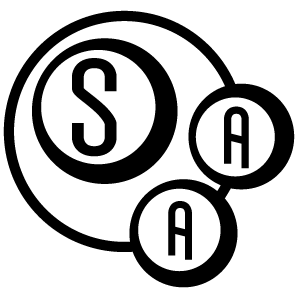Efflux | live audio-visual performance | 2016
Performed for POP•IN at the Ann Arbor Art Center by Simon Alexander-Adams (keyboard / electronics), Jonathan Taylor (drum kit, processed tabla), Carlos Garcia (video performer). Live visual projections and performance system developed by Simon Alexander-Adams. Efflux was premiered at the 54th Ann Arbor Film Festival. The performance at POP•IN in 2016 featured ad-hoc projection mapping, excerpts from which are shown in the video below:
efflux :: noun
- outward flow, as of water.
- something that flows out; effluence.
- a passing or lapse of time.
- a passing away; expiration; ending.
Efflux concerns itself with the flow of creative energy between the performers, and to a degree the audience (in the sense that one's presence in a space impacts the energy of that space). Efflux is not a notated piece of music, nor a fixed performance. Rather, it exists as a structure for improvisation through which performers can navigate the unexpected.
Liveness of the Performance:
The question of liveness is an important consideration to this work, particularly in the context of electronic music and visual performance. Efflux proposes a structure for interdisciplinary improvisation, defining constraints and form, while leaving space for unpredictability. The majority of visual content is generated in real time, reacting to audio and control signals from the musicians. Additionally, the visuals are performed directly by a third performer, who manipulates additional parameters, and directs larger changes. The intention is to create a system in which the music influences the visual content and vice versa (for this reason it is crucial that the musicians can see the visual projections in performance).
Musical Content:
The musical content comes from a collaboration between Simon Alexander-Adams (keyboard / electronics) and Jonathan Taylor (drum kit, found percussion, tabla through effects), drawing on elements of free improvisation, electronic music, jazz and Indian classical music. The two focus on navigating improvisational structures, creating unexpected textures, and seamlessly shifting between meditative drones, driving rhythms, and pointillistic scatterings. The sonic material used in the electronics includes glitch samples generated by crudely audifying non-music data as audio waveforms, along with samples from a toy Casio SK-60 sampler keyboard. Along with a standard drum kit, Jonathan Taylor employs tabla processed with audio effects.
Visual Content:
The visual content is inspired by advancements in space exploration, the fractal relationships ever-present in nature, and the parallels between micro and macroscopic elements of the universe. The seeds of the imagery come from many places - manipulations of archival footage and scans of old magazines, experiments with chaos and noise, distorting geometry and the flow of particle fields, and imagery created directly from the audio waveforms of the music.







